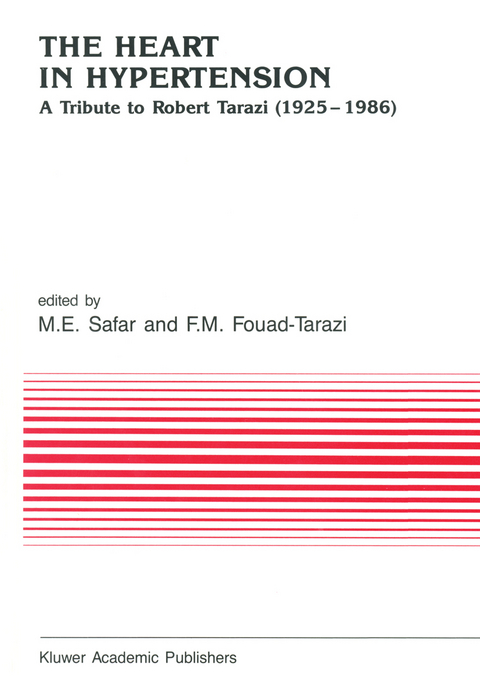
The Heart in Hypertension
Springer (Verlag)
978-94-010-6913-7 (ISBN)
Far more supporting information will be required before the full impact of echocardiographically-detected left ventricular hypertrophy can be determined. Nevertheless, it must be stated that the electrocardiogram still has the greatest predictive value of cardiovascular morbid and mortal events when the pattern of left ventricular hypertrophy plus repolarization abnormal- ities are present.
1. A tribute to Robert C. Tarazi, M.D. (1925–1986).- 2. The multifaceted aspects of cardiac involvement in hypertension.- One: Cardiac output level and systemic hemodynamics.- 3. Cardiac output in hypertension: Basic concepts and experimental studies.- 4. Haemodynamic development.- 5. Systemic hemodynamics and aging.- 6. The hemodynamics of borderline hypertension.- 7. Systemic hemodynamics in sustained essential and reno-vascular hypertension.- 8. Systemic hemodnamics in primary aldosteronism.- 9. Systemic hemodynamics in patients with pheochromocytoma.- 10. Systemic hemodynamics in renal parenchymal disease.- 11. Hemodynamics in patients with overweight and hypertension.- 12. Atherosclerotic hypertension: Systolic hypertension and arterial compliance in patients with arteriosclerosis obliterans of the lower limbs.- 13. Postmyocardial revascularization hypertension: The role of the heart.- Two: Cardiac structure and function.- 14. Cardiac structure and function in animal models and in human hypertension: Basic concepts.- 15. Volume and cardiac factors in the genesis of mineralocorticoid hypertension in the conscious dog.- 16. Heart and hypertension: The magnitude of the problem. Electrocardiographic and echocardiographic aspects.- 17. Acute volume expansion and pumping function of the heart in sustained essential hypertension.- 18. Systolic function and inotropism of the heart in borderline and sustained essential hypertension.- 19. Left ventricular diastolic function in hypertension.- 20. The right ventricle and the lesser circulation in essential hypertension.- 21. Management of hypertensive patients with cardiac problems.- Three: Coronary circulation, left ventricular hypertrophy, and hypertension.- 22. Coronary circulation, cardiac hypertrophy, and myocardialischemia: Basic concepts.- 23. Coronary circulation and coronary reserve in the hypertensive heart.- 24. Hypertension and coronary atherosclerosis.- 25. Clinical trials, coronary insufficiency, and large arteries in hypertension.- Four: Reversion of cardiac hypertrophy.- 26. Left ventricular hypertrophy and its reversion in hypertension.- 27. Regression of cardiac hypertrophy: Experimental animal model (A review).- 28. Cardiac structure and function after treatment with adrenergic blocking agents.- 29. Cardiac structure and function after vasodilating drugs (dihydralazine-minoxidil).- 30. The effect of converting enzyme inhibitors on the hemodynamic profile of hypertension.- 31. Cardiovascular structure and function after treatment with calcium entry inhibitors in hypertension.- Five: The heart and reversion of arterial and arteriolar structural changes.- 32. Baroreceptor mechanisms and the control of the vascular resistance.- 33. Structural changes of small resistance vessels in essential hypertension.- 34. Hemodynamic response to exercise in hypertension and its modulation by antihypertensive therapy.- 35. Reversion of cardiac, arteriolar and arterial changes following antihypertensive treatment.- Conclusion.- 36. The heart in hypertension: Mechanical and humoral factors.
| Reihe/Serie | Developments in Cardiovascular Medicine ; 98 |
|---|---|
| Zusatzinfo | 456 p. |
| Verlagsort | Dordrecht |
| Sprache | englisch |
| Maße | 170 x 244 mm |
| Themenwelt | Medizinische Fachgebiete ► Innere Medizin ► Kardiologie / Angiologie |
| ISBN-10 | 94-010-6913-1 / 9401069131 |
| ISBN-13 | 978-94-010-6913-7 / 9789401069137 |
| Zustand | Neuware |
| Haben Sie eine Frage zum Produkt? |
aus dem Bereich


